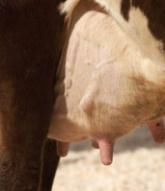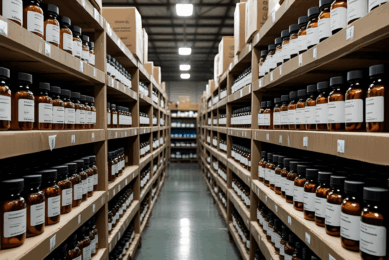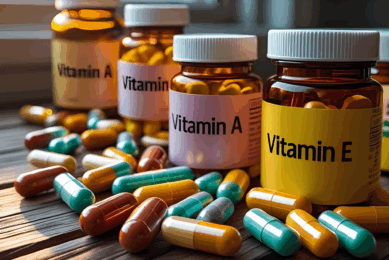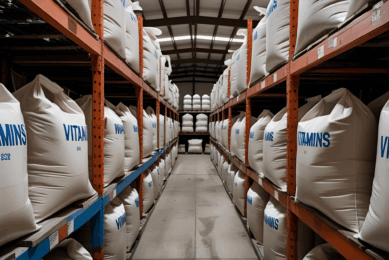Mastitis prevention: The nutritional approach

As dairy producers continually strive to prevent mastitis infections in their animals, they should remember that there is a relationship between proper nutrition and the disease, says Jud Heinrichs fromPenn State University.
Mastitis
continues to be a problem for dairy producers across the globe. The disease can
manifest itself in a clinical and subclinical form. Clinical
mastitis causes economic loss due to treatment costs, lost quarters, potential
animal deaths and most importantly, discarded milk. Subclinical 
mastitis on the other hand, silently reduces milk production and quality until
detected with a somatic cell count. Management strategies can have a large
impact in the prevention of
mastitis.
However, there is a growing pool of evidence that nutrition is linked to mastitis in
the dairy cow. Factors linked to mastitis in the mature dairy
cow often are associated with mastitis in the first lactation cow also, and
in many studies both age groups were included.
(Photo Caption: Mastitis – the inflammation
of the mammary gland – can significantly reduce milk production. However,
proper supplementation of minerals and vitamins might prevent the
problem.)
There may also
be risk factors unique to the heifer due to differences in feeding management
during the rearing or pre-calving portion of the heifer programme. At the onset
of lactation, heifers may suffer the effects of a depressed immune system in
specific situations.
Negative energy
balance and elevated serum betahydroxybutyrate have been implicated in reducing
leukocyte functionality; thus increasing the risk of diseases like mastitis.
Several trace minerals and vitamins have a direct effect on the function of the
immune system and therefore could have a direct effect on the ability of a cow
to combat mastitis. The dairy cow’s requirements for vitamins and minerals are
affected by a variety of factors such as age, pregnancy, and production level or
for the heifer, rate of growth (NRC, 2001). It has been accepted that for some vitamins and minerals, the amount
required by the animal for optimal immune function is greater than the amount
required for growth and reproduction. By the time clinical signs of deficiency
are observed, growth, immunity, and fertility likely have already been
compromised (NRC, 2001).
Vitamin E and
Selenium
One of the
earliest studies to address the enhancement of immune function in the dairy cow
related to mastitis was done by Smith et al. (1984) and studied the effects of
vitamin E and Se on the incidence and duration of clinical mastitis.
Improvements in vitamin E and Se supplementation were associated with improved
phagocytic cell activity and function. In studies that followed, it was observed
that the optimal benefit of these two nutrients was achieved when both were
supplemented in the diet of the dry cow to increase the defence against
mastitis. In the case of Se, soils in many parts of the world are deficient in
this mineral. Consequently, feeds grown in such soils
will be Se-deficient. Forages also provide a major source of naturally occurring
vitamin E; however, this vitamin declines in activity over time as feeds are
stored. Therefore, heifers fed typical diets based primarily on stored forage
are likely to be prime candidates for Se and vitamin E
deficiency unless diets are supplemented (Sordillo et al., 1997).
In a recent
meta-analysis of vitamin E supplementation research (Moyo et al., 2005), vitamin
E was associated with a 14% reduction in the risk of intramammary infection
(IMI), reduced somatic cell count (SCC) by a factor of 0.7 and decreased risk of
clinical mastitis by 30%. LeBlanc et al. (2002) found no
response from vitamin E supplementation in first lactation animals likely due to
more supplementation of vitamin E and Se in pre-fresh rations. Little work has
been done on the appropriate recommendations for pre-fresh heifers; however,
their needs are not likely to be different from adult
dry cows on a metabolic body size basis. With the availability of economical
feed sources of Se, supplementing this nutrient is more common than in the past.
Compared to absorption of Se from inorganic sources, absorption is improved when
feeding organic Se sources. However, Weiss and Hogan (2005) reported that
improved Se absorption from Se-yeast did not enhance immunity. They
postulated this lack of response was due to absorption of Se-methionine into
proteins other than those involved in the immune system, which generally require
Se-cysteine.
Vitamin A and
beta-carotene
Vitamin A and
beta-carotene are also related to immunity and mastitis. These nutrients are
important in maintaining epithelial tissue health and play a role in mucosal
surface integrity and stability (Sordillo et al., 1997). These functions may
affect cow resistance to pathogen
entry into the
mammary gland as well as resistance post-entry. In addition, beta-carotene
appears to function as an antioxidant, reducing superoxide formation within the
phagocyte (Sordillo et al., 1997). This is potentially important because
phagocytosis and internal killing of bacteria once engulfed are primary
mechanisms used by phagocytic cells to eliminate bacteria. Both vitamin A and
beta-carotene also appear to have stimulatory effects on immune cells (Daniel et
al., 1991).
However, several studies have shown no impact of
supplementing beta-carotene on IMI level. Bindas et al. (1984) found no
difference between SCC of cows given 600 mg of supplemental beta-carotene and
control cows fed a high corn silage diet. Another study found that dietary
supplementation with vitamin A at 170,000 IU/d or beta-carotene at 300 mg/d had
no effect on clinical mastitis or SCC through the dry period, at calving, or up
to 6 weeks post-calving (Oldham et al., 1991). Data showing the association of
vitamin A and beta-carotene with mastitis have been variable at best, and
supplementation is likely not needed in excess of normal recommendations. Levels
currently recommended (NRC, 2001) are 110 IU/kg BW/d for milking and dry cows.
The recommended requirement for all ages of growing dairy animals is 80 IU/d
(NRC, 2001).
Copper and Zinc
Copper is
another mineral associated with immune function. Copper is active in neutrophil
production and affects phagocyte
killing ability and is required for antibody development and lymphocyte
replication. Few studies have been
published demonstrating the efficacy of Cu
supplementation on new IMI rates or SCC. Research was conducted (Harmon et al.,
1994; Scaletti et al., 2003) that showed Cu (from Cu sulfate) fed at 20 ppm to
heifers at 60 d pre-calving through 30 d fresh appeared to decrease severity of
experimentally induced Escherichia coli infections compared with feeding a basal
Cu level of 6.5 ppm. Heifers receiving Cu sulfate supplementation had decreased
severity of clinical mastitis cases; however, length of infection was not
different between treatments (Scaletti et al., 2003). With regard to impact of
Cu supplementation on general IMI level, results have been variable. Scaletti et
al. (2003) found a tendency for quarters to have fewer confirmed IMI in
Cu-supplemented heifers at calving compared to heifers not receiving
supplemental Cu. Harmon et al. (1994) found Cu-supplemented cows had fewer
infected quarters, fewer IMI by major pathogens, and no difference between
treatments for prevalence of coagulase-negative staphylococci IMI at
calving.
Zinc has a
critical role in maintaining the health and integrity of skin due to its role in
cellular repair and replacement, all keys to the natural defence mechanisms of
the mammary gland. In a study by Nocek et al. (2006), first lactation animals
had no differences in SCC when fed Zn, Mn, Cu, and Co in complexed or inorganic
form at 75% or 100% of NRC above the basal diets.
In this study a small but significant milk production response
(kg/d) was noted with the organic over the inorganic minerals, even when the
inorganic minerals were fed at 75% of NRC (2001). Based on research to date,
lactating cow recommendations are for Zn supplementation at 40–60 mg/kg (NRC,
2001).
Epidemiological
studies
In several
epidemiological studies risk factors related to nutrition and mastitis were
examined, and to a limited extent, risk factors specifically in first lactation
animals were included. In a study by Barkema et al. (1999) that included both
heifers and older cows, nutrition was associated with increased incidence rate
of clinical mastitis. Added minerals in the diet were associated with
decreased clinical mastitis caused by Streptococcus
dysgalactiae and Streptococcus uberis. During periods when corn silage was fed,
overall incidence of clinical mastitis and incidence of clinical mastitis caused
by S. uberis were reduced; however, the incidence rate of E. coli mastitis
was increased. Another study from
Norway
(Waage et al., 1998) found that heifers kept on pasture in sum mer were at a
decreased risk for clinical mastitis when heifers calved between June and
September (summer). This response was also shown by heifers purchased from farms
that grazed heifers, even though they were not subsequently grazed after
calving. Feed and feeding management factors related to veterinary-treated
clinical mastitis were studied by Arvidson et al. (2005) utilising a large
database from the Swedish Dairy Association. Feeding high amounts of
concentrates was positively associated with an increased incidence of clinical
mastitis in the final multi-variable model.
The authors
reported that in the single-variable models, the amount of concentrate given at
calving and at peak milk, heifers’ access to salt on pasture, and feeding
related disease (ketosis, udder edema, laminitis) were all associated with the
incidence of veterinary-treated clinical mastitis. In a second study
Arvidson et al. (2005) used a smaller, regional dataset and found that the
amount of concentrates fed to calves under 3 months of age, type and amount of
roughage given at weaning time, and the time to transition heifers to
concentrate feeding before calving had an effect on SCC.
Conclusion
There is growing
evidence that nutrition and feeding management can affect mastitis, with some of
these nutritional components likely to be more specific to heifers than to older
cows due to differences in nutrient requirements and metabolism. The studies
mentioned here show the importance of an adequate intake of vitamin A or beta
carotene, selenium, vitamin E, copper, and zinc for maintaining proper immune
function and mammary gland health. The level of supplementation required should
be determined by concentrations of naturally occurring minerals
and vitamins in
forage and grain sources, which depend on conditions of their growth, including
soil, and type/ length of storage. Supplementing the diet of heifers is very
important in allowing these animals to maintain proper complete nutrient status
to allow for optimal immunity at or near calving.
However, continued research using field data and controlled studies is needed to further define the role of nutrition in animal
health and in affecting specific mastitis organisms.
Source: Feed Mix magazine Volume 16 No. 6











